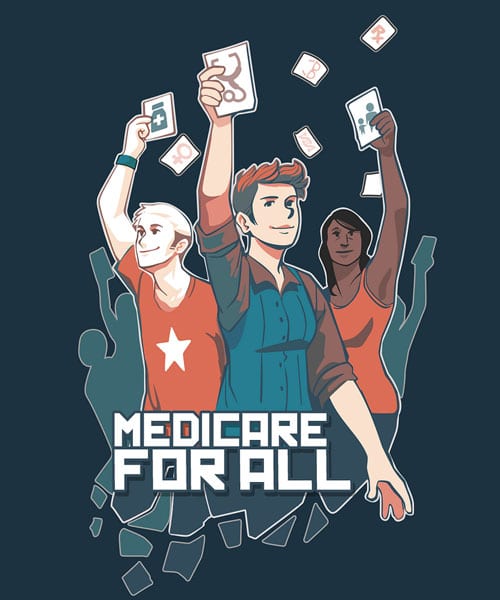
December 12, 2018; GritPost
A Reuters poll last year, which found that 70 percent of Americans (including 52 percent of Republicans) support “Medicare for All,” as universal healthcare now has been branded, was received with surprise by many. But this finding—including the particular popularity of universal healthcare among younger voters—should not have been unexpected.
Consider the results of another poll, one announced by NPR last month, which found that of the 20 percent of respondents who admitted to delaying or skipping needed medical services due to cost, more than a third were under the age of 35. When asked if they or anyone in their household had difficulty paying for healthcare, 40.7 percent of respondents under 35 said “yes.” Likewise, the highest frequency of difficulty paying for prescription drugs was found among respondents under age 35 (38 percent).
The reality is that healthcare costs are rising faster than inflation, while pay for entry-level workers continues to stagnate. Only 25 percent of men ages 25 to 34 had incomes of less than $30,000 per year (adjusted for inflation) in 1975. By 2016, however, that share had risen to 41 percent. Add to that the rising burden of school loan debt now plaguing young Americans, and it’s a recipe for disaster. In fact, a New York Times column predicted that a new financial crisis could erupt in 2019 due to student loan debt.
Other analysts echo this alarm, noting that the median millennial only has $2,430 in savings and that a growing percentage have absolutely nothing saved.
Sign up for our free newsletters
Subscribe to NPQ's newsletters to have our top stories delivered directly to your inbox.
By signing up, you agree to our privacy policy and terms of use, and to receive messages from NPQ and our partners.
“A generation of well-educated and underemployed millennials, told to value a college education above all, could drag down an economy that never seemed to want them in the first place,” the New York Times speculated.
The result, as John Nichols wrote in The Nation just before the election, is the growing popularity of political leaders like senator and presidential-hopeful Bernie Sanders. “When Sanders is rallying young people who provided overwhelming support for his 2016 presidential bid, the loudest applause comes when he brings up the need to pass a single-payer health-care system.”
Nearly 50 new Democratic members of Congress campaigned for Medicare for All, and as Nichols predicted, it was the younger generation of voters who helped put them in office.
Why do they believe a national health plan is the answer to their woes? Consider that the United States spent 17.8 percent of its GDP on healthcare in 2016. In contrast, the average spending of 10 other high-income countries—Canada, Germany, Australia, the UK, Japan, Sweden, France, the Netherlands, Switzerland and Denmark, all of which have mostly public health care—was only 11.5 percent. Per capita, the United States spent $9,403. That’s nearly double what the others spent.
Yet of all of these countries, America has the least accessible system. Even with the Affordable Care Act (Obamacare), 27 million remain uninsured. And in 2017, the number of uninsured people increased by nearly 700,000 people, the first increase since implementation of the ACA. Nearly half of uninsured adults say do not have coverage because the cost continues to be too high. Clearly, American “exceptionalism” isn’t working.—Pam Bailey













